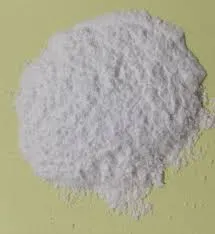- Afrikaans
- Albanian
- Amharic
- Arabic
- Armenian
- Azerbaijani
- Basque
- Belarusian
- Bengali
- Bosnian
- Bulgarian
- Catalan
- Cebuano
- Corsican
- Croatian
- Czech
- Danish
- Dutch
- English
- Esperanto
- Estonian
- Finnish
- French
- Frisian
- Galician
- Georgian
- German
- Greek
- Gujarati
- Haitian Creole
- hausa
- hawaiian
- Hebrew
- Hindi
- Miao
- Hungarian
- Icelandic
- igbo
- Indonesian
- irish
- Italian
- Japanese
- Javanese
- Kannada
- kazakh
- Khmer
- Rwandese
- Korean
- Kurdish
- Kyrgyz
- Lao
- Latin
- Latvian
- Lithuanian
- Luxembourgish
- Macedonian
- Malgashi
- Malay
- Malayalam
- Maltese
- Maori
- Marathi
- Mongolian
- Myanmar
- Nepali
- Norwegian
- Norwegian
- Occitan
- Pashto
- Persian
- Polish
- Portuguese
- Punjabi
- Romanian
- Russian
- Samoan
- Scottish Gaelic
- Serbian
- Sesotho
- Shona
- Sindhi
- Sinhala
- Slovak
- Slovenian
- Somali
- Spanish
- Sundanese
- Swahili
- Swedish
- Tagalog
- Tajik
- Tamil
- Tatar
- Telugu
- Thai
- Turkish
- Turkmen
- Ukrainian
- Urdu
- Uighur
- Uzbek
- Vietnamese
- Welsh
- Bantu
- Yiddish
- Yoruba
- Zulu
नोव्हेंबर . 07, 2024 06:16 Back to list
Formulation Development of Tylosin Tartrate for Injectable Applications in Veterinary Medicine
Tylosin Tartrate Injection Formulation An Overview
Tylosin tartrate, a macrolide antibiotic, is widely used in veterinary medicine to treat various bacterial infections in livestock and poultry. Its efficacy against gram-positive bacteria, mycoplasmas, and certain gram-negative organisms makes it a valuable tool in veterinary therapeutics. The formulation of tylosin tartrate for injection is crucial for ensuring its effectiveness, safety, and stability. This article explores the key aspects of tylosin tartrate injection formulation, including its components, benefits, challenges, and recommendations for optimal use.
Components of the Formulation
The primary active ingredient in the injection formulation is tylosin tariff, which is a result of fermentation processes involving the bacterium *Streptomyces fradiae*. Tylosin's solubility in water is primarily influenced by its salt form; hence, the tartrate form is utilized to enhance its solubility, allowing for easier administration through parenteral routes.
The formulation typically includes several excipients, which serve various purposes
1. Buffering agents These help maintain the pH of the solution, ensuring drug stability and reducing degradation. Common buffering agents include citrates and phosphates. 2. Preservatives To prolong shelf life and prevent microbial contamination, preservatives such as benzyl alcohol may be included. However, the choice of preservative must balance efficacy and safety.
3. Stabilizers These help maintain the physical and chemical integrity of the formulation over time. Agents such as sodium chloride can be used to enhance the stability of the injection solution.
4. Solubilizers To further improve the solubility of tylosin, solubilizers like polysorbates might be incorporated, allowing for better absorption post-injection.
Benefits of Tylosin Tartrate Injection
Tylosin tartrate injections are an effective means of delivering therapy for specific infections in animals. The primary benefits include
tylosin tartrate injection formulation

- Rapid Action Injection formulations allow for quick therapeutic effects, especially important in severe infections requiring prompt treatment. - Targeted Delivery Parenteral administration ensures that the antibiotic is delivered directly into the bloodstream, facilitating rapid distribution and higher concentrations at the site of infection. - Reduced Gastrointestinal Side Effects Compared to oral formulations, injectable forms bypass the gastrointestinal tract, limiting the potential for side effects such as nausea or gut flora disruption.
Challenges in Tylosin Tartrate Formulation
While the benefits are notable, the formulation of tylosin tartrate injections presents several challenges
- Stability Issues Tylosin can be sensitive to temperature and light, which may compromise its stability and efficacy. Proper storage and handling procedures are critical in maintaining product integrity. - Injection Site Reactions The potential for tissue irritation at the injection site may occur, necessitating careful administration techniques to minimize discomfort in the animal. - Antimicrobial Resistance Concerns surrounding the development of antimicrobial resistance necessitate prudent use of tylosin, ensuring it is only used when appropriate.
Recommendations for Optimal Use
To maximize the benefits of tylosin tartrate injections while minimizing risks, it is essential to follow established guidelines
- Veterinary Oversight Always use tylosin under the guidance of a qualified veterinarian. This ensures that the antibiotic is appropriate for the specific condition being treated. - Adhere to Dosing Instructions It’s crucial to strictly follow the recommended dosages and administration protocols to reduce the risk of resistance and ensure effective treatment. - Monitor for Adverse Reactions Observing the treated animals for any adverse reactions or side effects can lead to prompt intervention if needed.
Conclusion
Tylosin tartrate injection formulation represents a significant advancement in veterinary medicine, providing effective treatment options for bacterial infections in animals. Understanding the components, benefits, challenges, and guidelines associated with this formulation is essential for optimizing its use and ensuring the health and welfare of livestock and poultry. By adhering to proper administration practices and maintaining vigilance regarding potential issues, veterinarians and animal caretakers can harness the full potential of this important therapeutic agent.
-
Guide to Oxytetracycline Injection
NewsMar.27,2025
-
Guide to Colistin Sulphate
NewsMar.27,2025
-
Gentamicin Sulfate: Uses, Price, And Key Information
NewsMar.27,2025
-
Enrofloxacin Injection: Uses, Price, And Supplier Information
NewsMar.27,2025
-
Dexamethasone Sodium Phosphate Injection: Uses, Price, And Key Information
NewsMar.27,2025
-
Albendazole Tablet: Uses, Dosage, Cost, And Key Information
NewsMar.27,2025













